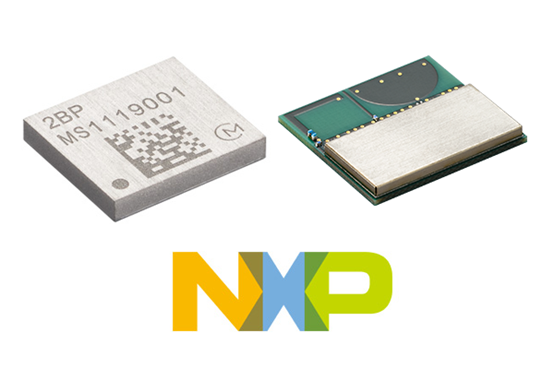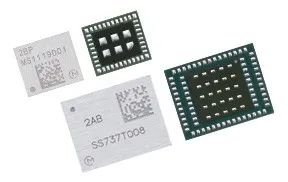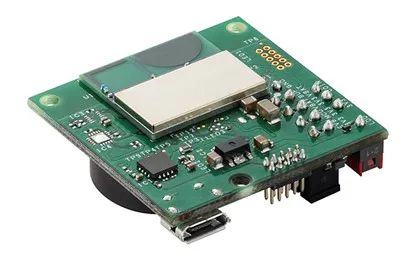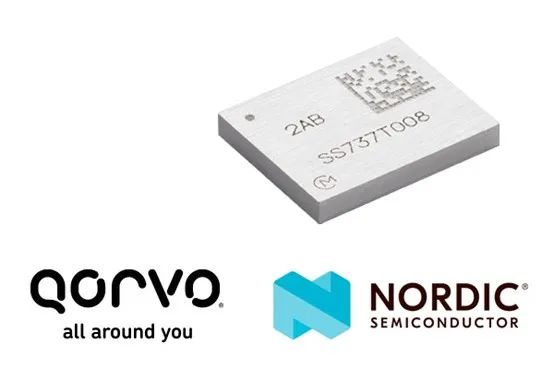
Ultra-Wideband (UWB) technology is a short-range high-speed wireless communication technology. Its working frequency band is extremely wide, can cover multiple frequency bands, and the time domain of signal transmission is very short, which makes it has great application potential in short-range high-speed communication. This paper will introduce the development and application of UWB technology, as well as the functions and features of several UWB modules launched by Murata.

(1)UWB technology to enhance the development of intelligent applications
UWB technology works by sending very short pulses that are very short in the time domain, usually only nanosecond in length, but very wide in the frequency domain, covering hundreds of MHz or even several GHz of bandwidth. Because the UWB signal has very low energy, it does not interfere with other radio systems.
The bandwidth of UWB technology is extremely wide, which enables the technology to realize high-speed data transmission, and it can support the function of anti-multipath interference. The time-domain characteristics of UWB signal enable it to penetrate obstacles in the multipath environment, reduce the influence of multipath interference, and thus improve the communication reliability.
On the other hand, UWB technology facilitates safe and accurate distance measurements based on radio wave time-of-flight (ToF) applications, enabling very high precision positioning, often within a few centimeters. In addition, UWB technology has very low transmission power, making it useful in low-power applications, such as Internet of Things devices and wireless sensor networks.
UWB technology is a very promising wireless communication technology, it has the characteristics of extremely wide bandwidth, anti-multipath interference, high precision positioning and low power consumption, and has a wide application prospect in the future intelligent applications.

(2)UWB technology can realize high precision positioning and navigation
UWB technology is widely used. For example, UWB technology can achieve very high precision positioning and navigation, which is very useful for indoor navigation, indoor positioning, shopping mall navigation, logistics management and other applications. UWB technology can also realize the precise positioning of assets, so as to achieve asset tracking, logistics management, product traceability and other applications. Because UWB technology can realize accurate monitoring of personnel and items, it is applied to the security fields such as access control management, personnel tracking, anti-theft system and monitoring system.
In smart home applications, UWB technology can realize accurate positioning and tracking of household products, such as judging the position of human in the home environment and adjusting the temperature and wind direction of air conditioning, so as to realize smart home, smart household appliances and other applications. In addition, UWB technology can be applied in the field of healthcare to realize accurate monitoring and positioning of patients, so as to realize the application of medical intelligence, health monitoring and so on.

(3)Highly integrated and reliable subminiature UWB module
In order to speed up customer development of UWB applications, Murata has launched a number of UWB modules, which can be divided into two product lines. The first is the UWB module based on NXP chipset. NXP UWB chipset is a highly integrated and reliable UWB solution. Murata's modules integrate NXP UWB chipsets, filters, clocks and peripheral components for IoT devices using UWB technology to achieve accurate location detection. Murata has two products in the UWB module based on NXP chipset, namely Type 2BP and Type 2DK.
The Murata Type 2BP is an ultra-small UWB module that uses NXP's Trimension SR150 UWB chipset, clock, filter and peripheral components. It is ideal for general iot devices and its low power consumption characteristics are also suitable for battery powered devices. Type 2BP is a small-size UWB module with common type shielding. It supports two UWB channels, Ch 5 and 9, with frequencies between UWB 6250 MHz and 8250 MHz. It has SPI interface and can support 3 antennas (3D AoA or 2D AoA is supported).
Murata Type 2BP adopts resin-shaped and cotype shielding structure, which is quite compact and supports power calibration and Xtal calibration. It adopts ARM Cortex-M33 CPU core, with built-in 128kB code RAM and 128kB data RAM. It supports external antenna, but does not contain RF connector and antenna. Support 1.71V ~ 1.98V power supply voltage, adopt LGA package and SMT mounting, size is only 6.6 × 5.8 × 1.2mm, can work in the temperature range of -30℃ to 85℃. The Murata Type 2BP has been approved by FCC/IC/MIC (Japan), has ETSI Report, FiRa certification, and complies with ISO9001 specification.
Murata also introduced the Type 2BP evaluation suite -- LBUA0VG2BP-EVK-P to assist customers in product evaluation. The Type 2BP evaluation board of the Murata UWB module has the Type 2BP and NXP QN9090 (BLE chip) with the USB-UART conversion chip. It can be powered by USB cable and COM port of PC, and Type 2BP can be controlled by QN9090. The development suite has been approved by Apple to evaluate UWB-enabled accessories that can interact with Apple products containing the U1 chip using Apple's Nearby Interaction framework.

(4)It also supports the integrated module of Bluetooth and UWB technology
Another Murata UWB module based on NXP chipset is the Type 2DK, which is an integrated UWB and Bluetooth LE module. Integrated NXP Trimension SR040 UWB chipset, NXP QN9090 Bluetooth LE and MCU chipset, integrated UWB/Bluetooth LE onboard antenna and peripheral components, Low power consumption is ideal for button-battery-powered UWB tags/trackers and general iot devices.
Murata Type 2DK supports two UWB bands, Ch 5 and 9, with frequencies ranging from UWB 6250 MHz to 8250 MHz. It adopts ARM Cortex-M4 (QN9090) CPU core, built-in 640KB flash memory and 152KB SRAM (QN9090). With integrated antenna, support power supply voltage 1.9V ~ 3.6V, LGA package and SMT installation, size only 19.6 × 18.2 × 2.3mm, can work in the temperature range of -30℃ to 85℃. The Type 2DK is currently in the certification phase, and future plans are for FCC/IC/MIC (Japan) certification, as well as ETSI reporting and ISO9001 compliance.
The evaluation kit with Type 2DK is LBUA2ZZ2DK-EVK, which is equipped with Type 2DK, UART-USB chip, SWD port and button battery holder, and the size is 36 × 35× 12.45mm.

(5)UWB module suitable for small and battery powered iot devices
Murata also has a series of UWB modules, the Type 2AB, designed as ultra-small, high-quality, low-power UWB modules, ideal for small and battery-powered iot devices and applications. Type 2AB uses Qorvo DW3110/3120 UWB chipset, supports Ch 5 and 9 UWB bands, Bluetooth LE 2.4GHz, has host-less module integrated with Nordic nRF52840 chip, It also features Bluetooth Low Power (BLE) for waking up UWB and updating firmware, has integrated 3-axis sensors available to save battery power, and has embedded reference clocks for UWB and MCU.
The Type 2AB ultra-small, highly integrated UWB module contributes to customer product development with a square area 75% smaller than that of Chip Direct Package (CoB, Chip On Board) solutions, frequency, Tx power, and antenna delay calibrated per device, and supports multiple antenna design and evaluation.
Murata Type 2AB adopts ARM Cortex-M4 CPU core, built-in 1MB flash memory and 256KB memory, supports UWB 6250 MHz ~ 8250 MHz, supports external antenna, but does not contain RF connector and antenna, adopts LGA package and SMT installation. The size is only 10.5 × 8.3 × 1.44mm, which can work in the temperature range of -40℃ to 85℃. The power supply voltage of VDD1, VDD2 and VDDMCU is between 2.5V ~ 3.6V, and the power supply voltage of VUSB is between 4.35V ~ 5.0V. Bluetooth 5.2 is supported. Built-in USB, UART, SPI, I2C host interface, through FCC/IC/MIC (Japan) certification and ETSI report, in line with ISO9001 specifications.
Murata also introduced the UWB/BLE module Type 2AB evaluation board ─ Lbua5QJJ2AB-828EVB, which can connect the Type-C USB end of the development board to PC via USB interface, and has available power and serial interface. The customer can evaluate RF performance by entering the AT command through the serial terminal. If the customer reprograms the demo firmware into the module, Simple functional evaluation of TWR (Two Way Ranging) and PDoA (Phase Difference of Arrival) can also be performed.
Conclusion
UWB technology has the characteristics of high precision and low power consumption, and can realize very high precision positioning and navigation applications. It can be widely used in the field of Internet of Things and smart home, which has gradually attracted the attention of the market and has great market development potential.
Three UWB modules launched by Murata, each with its own characteristics, can meet the needs of a variety of different application fields, Murata also launched their own corresponding development tools suite, will speed up the speed of product development of customers, is an ideal choice for manufacturers interested in the development of related products.